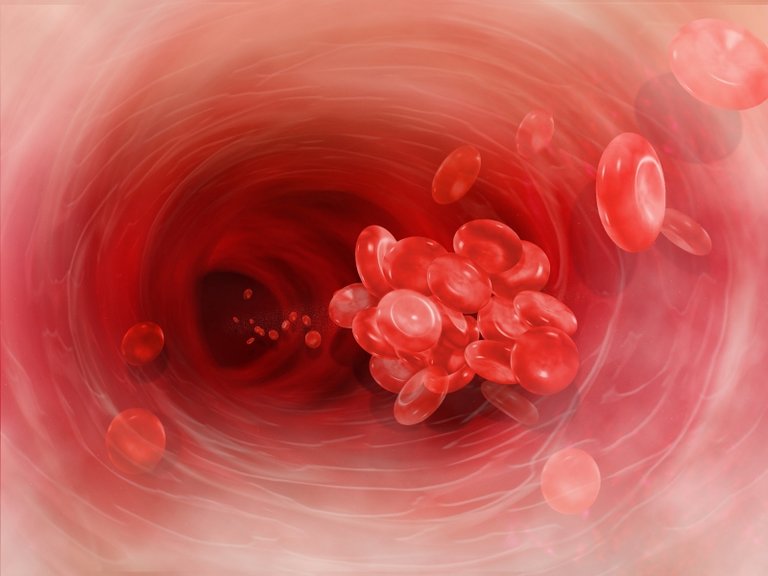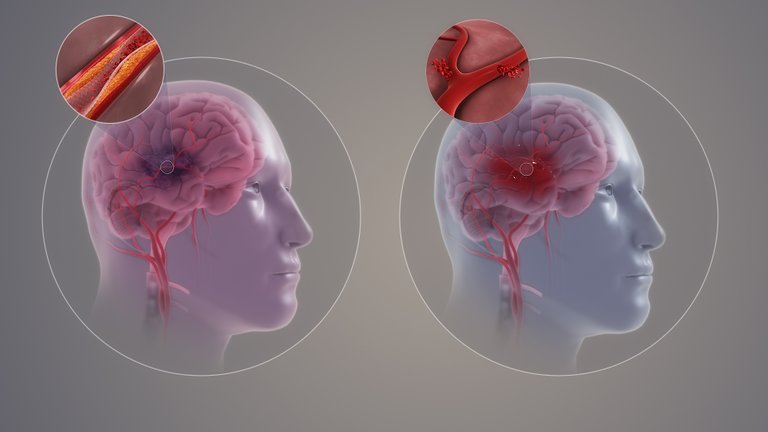Explaining the Threat of Blood Clots to Our Health
Imagine a case of a woman who has severe headache, followed by vomiting, weakness in arms and legs, and difficulty in speech and since the headache wasn't going anywhere, she began to worry. Since there was no wound or trauma to the head, she went to the hospital and had a CT scan which showed that she had experienced blood clotting and swelling in her brain.
Blood clots, also known as thrombi, are gelatinous masses that can form within our blood vessels. These clots may remain intact or become dislodged, and they can emerge anywhere in the body. Surprisingly, some blood clots manifest with noticeable symptoms like pain and swelling, while others lurk silently, unbeknownst to the individuals.
Blood vessels allow for the circulation of blood, and blood contains lots of components such as red blood cells, immune cells, oxygen, pathogens, nutrients, hormones, water, and so on. Some of the components in blood can lead to blood clots if there is reasons for it to exists. In the blood vessel, blood clot can occur in the artery or in the vein.
In the case of arterial clots, the process often begins with low-density lipoprotein (LDL). LDL, responsible for transporting fats to cells, can accumulate excessively in the bloodstream due to dietary choices or genetic predisposition. When excess LDL adheres to vessel walls, the immune system perceives it as foreign and mounts an attack. This immune response can lead to inflammation, damaging vessel walls and potentially resulting in blood clot formation.
In veins, the same process occurs, and during the inflammation of the veins, the immune system can cause other components such as Coagulation factors to attach to the region. Coagulation factors are proteins which control bleeding and as such begin to trigger blood clotting of the bleeding. The blood clot can begin to affect blood flow through the vessel.
Blood clots have the potential to cause complications, most notably embolisms. An embolism occurs when a blood clot breaks free from its original location, travels through the bloodstream, and lodges itself within another vessel. Such events can deprive vital organs of oxygen, leading to dire consequences like strokes, pulmonary embolism, cardiac arrest, or heart attacks. The brain can also fall victim to these hazards, as evidenced by the scenario outlined earlier where the patient suffer from probably a cerebral venous sinus thrombosis (CVST).
In cerebral venous sinus thrombosis (CVST), the blood clot covers the Dural venous synthesis vessel which is important in blood flow in the brain. Patients who suffer can CVST can have it as a result of certain factors such as genetics, hormones, surgery, and smoking and in the case of CVST, women are three times likely to come up with it than men and this is as a result of hormonal changes.
Using Birth control, and pregnancy can lead to this changes in hormone, and this is because the hormones can impact the level of Coagulation factors (fibrinogen, prothrombin, factor VII, factor VIII, and factor X). Genetics also play an important as certain gene variation can lead to thrombosis or the triggering of the immune system. One gene variation can lead to lower levels of antithrombin, which prevents clotting, another can lead to the increase of prothrombin which would increase the cause of blood clotting.
Certain vaccine like the Astrazeneca was believed to be a cause of blood clot but it doesn't. Rather, Astrazeneca vaccine has been shown to reduce the risk of blood clots in vessels.
Blood clots, often undetectable until they wreak havoc, underscore the importance of understanding these hidden threats. Arising from complex processes within our blood vessels, these clots can lead to life-threatening complications. Vigilance, awareness, and early intervention are essential in managing the risks associated with blood clot formation.
Read More
https://www.ema.europa.eu/en
https://www.bmj.com
https://www.ncbi.nlm.nih.gov/pmc/articles/PMC9055170/
https://www.hematology.org/education/patients/blood-clots
https://www.msdmanuals.com/home/blood-disorders/blood-clotting-process/how-blood-clots
https://www.ncbi.nlm.nih.gov/books/NBK343489/
https://www.ncbi.nlm.nih.gov/pmc/articles/PMC4669071/
https://www.ncbi.nlm.nih.gov/pmc/articles/PMC3432325/
https://www.ncbi.nlm.nih.gov/pmc/articles/PMC3151110/
https://www.ncbi.nlm.nih.gov/pmc/articles/PMC6065414/
https://www.hopkinsmedicine.org
https://www.ncbi.nlm.nih.gov/books/NBK560598/
https://www.mdpi.com/2076-393X/10/2/232



Thanks for your contribution to the STEMsocial community. Feel free to join us on discord to get to know the rest of us!
Please consider delegating to the @stemsocial account (85% of the curation rewards are returned).
Thanks for including @stemsocial as a beneficiary, which gives you stronger support.